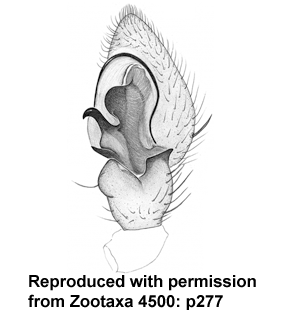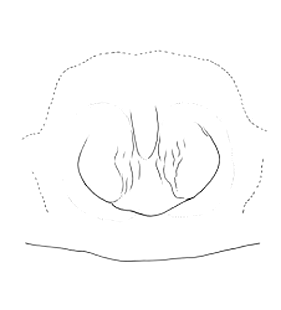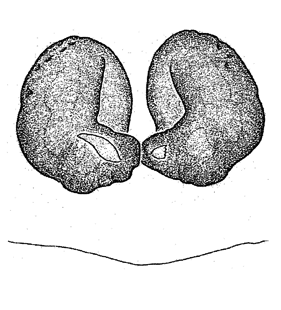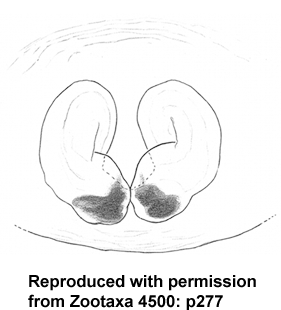Xysticus alpinus Kulczyński, 1887
Description
Palp female: compact. Epigyne has only 2 independent, protruding, longish ovate, vertical, strongly sclerotised structures instead of an epigynal groove. Vulva consisting of 2 sac-like, glandular structures. Prosoma dark red-brown. Sternum brown to dark brown, longish oval, relatively densely provided with spines. Chelicerae dark brown, frontally densely spined. Legs brown to dark brown or orange-brown, distally darker, legs provided with very robust spines. Opisthosoma grey, beige to sand-brown, partly with small, yellow-brown spots. Spinnerets brown.
Body length female: 7.8-11.4 mmAdditional information
alpine grasslands, scree slopes, rock glaciers, >2000m
Distribution
Phenology
| Jan | Feb | Mar | Apr | May | Jun | Jul | Aug | Sep | Oct | Nov | Dec |
 |  |
Figures
Distribution List
"No references" does not mean that the species does not occur in this country, but that we have not yet inserted the reference for it. We are working on it.
References
Ballarin F, Pantini P, Gobbi M (2018) Elevation to species level and redescription of Xysticus alpinus Kulczyński, 1887 stat. n. (Araneae, Thomisidae). Zootaxa 4500: 271-280 ![]()
Jantscher E (2001a) Revision der Krabbenspinnengattung Xysticus C.L. Koch, 1835 (Araneae, Thomisidae) in Zentraleuropa. Dissertation, Univ. Graz, 328 pp., 81 pls. ![]()
Pantini P, Isaia M (2019) Araneae.it: the online catalog of Italian spiders, with addenda on other arachnid orders occurring in Italy (Arachnida: Araneae, Opiliones, Palpigradi, Pseudoscorpionida, Scorpiones, Solifugae). Fragmenta Entomologica 51: 127-152 ![]()
WSC (2024) World Spider Catalog. Version 25.5. Natural History Museum Bern, online at http://wsc.nmbe.ch (31.10.2024) doi: 10.24436/2 ![]()
Updates
| 16-10-2018 | Image insert | |
| 16-10-2018 | Distribution update | Detail |
| 07-03-2016 | Image insert |









